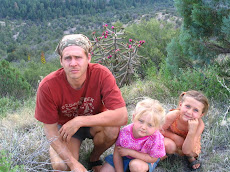 Today is my second day eating 100% raw and I gathered dandelion flowers for my green smoothie. I picked about 40 to 50 of them. You just pluck the flower and pinch off the green base, so that there is no white sap left on the flower (the sap is very bitter). It's important to do this before they go in the bag, or sap leaking out of the green stems will get on the flowers and make them bitter. Process them on the spot, then place them in your gathering bag or basket.
Today is my second day eating 100% raw and I gathered dandelion flowers for my green smoothie. I picked about 40 to 50 of them. You just pluck the flower and pinch off the green base, so that there is no white sap left on the flower (the sap is very bitter). It's important to do this before they go in the bag, or sap leaking out of the green stems will get on the flowers and make them bitter. Process them on the spot, then place them in your gathering bag or basket.For the smoothie I used 2 bananas, 1 mango, 1 cup of water, and the flowers. It was excellent. Sweet and rich (dandelion flowers are sweet), with a great texture. I felt so balanced after this meal I didn't eat anything else the rest of the evening - even though there was a tempting durian in the fridge.
Though 'going raw' is psychologically brutal in the beginning (especially the first 2 weeks - like breaking free of any other addiction), I feel like I'm doing okay and stable. Making sure I focus on greens and minerals more than anything else (rather than sugars and fats) has balanced me very well.
There are inevitably moments of course where you pity yourself, and dwell on things you can't have anymore. But you can't have it all in life. No you can't have those big comforting meals anymore that you lived your whole life around, going from meal to meal. But for giving it up you get perfect health, a perfect body, and happiness. I think it's a good trade.
Most of the weeds nearby are roadside weeds, so I thought I should fully research the effects of auto emissions on roadside plants, before I make them a staple in my diet. The facts are not good. Not only are there gaseous emissions in exhaust, there is also particulate matter that comes out the tailpipe, as well as off the tires. The particulate matter is things like heavy metals, as well as other pollutants.
But edible weeds often thrive by the side of the road. Look at this patch of henbit, with its understory of chickweed:

The biggest factors are how much use the road gets - something with only a car an hour, upslope from the road . . . these plants are probably fine. A closed road would be best. But a road with heavy traffic - the plants are probably affected badly. But the particulate matter tends to only cover the immediate roadside. The level of pollution drops rapidly as you move away from the road.
The dandelion flowers I gathered were uphill from a busy road. The flowers are extremely short-lived, so not exposed to pollution for very long. Hopefully I can find some nearby (walking distance) sources for wild food that are far from roads.
.





Could cite your sources for the contamination ? Considering phytodegradation, and phytostabilization, and phytoaccumulation, I'm curious what pollutants are present as a result of road use. I've just begun to research it, and any sources you have looked at already would be of interest to me. Thanks! Julie
ReplyDelete